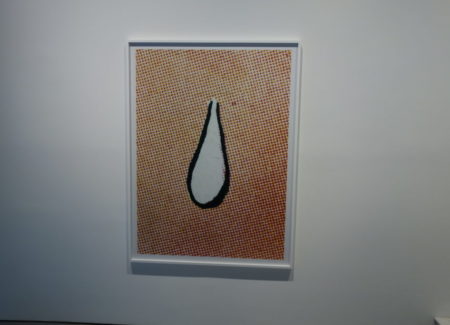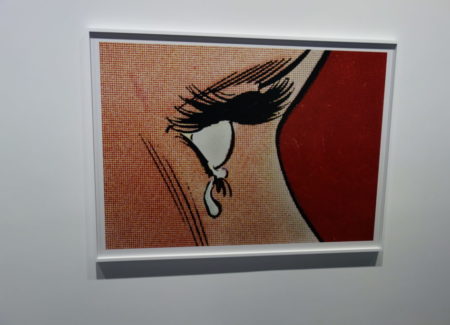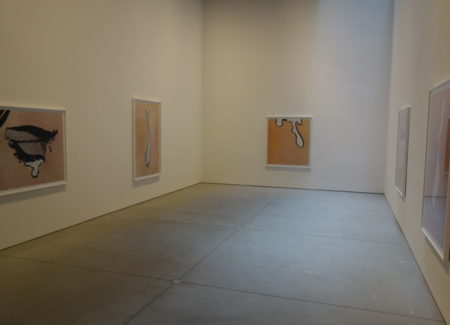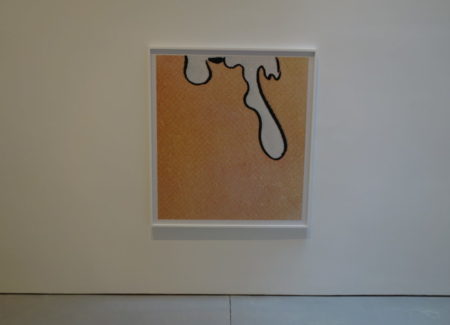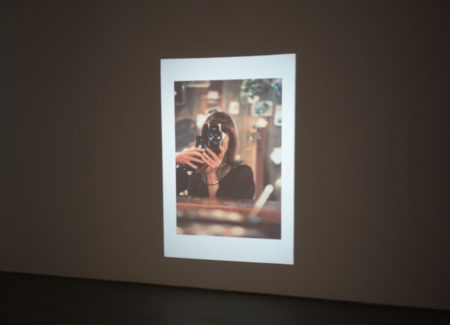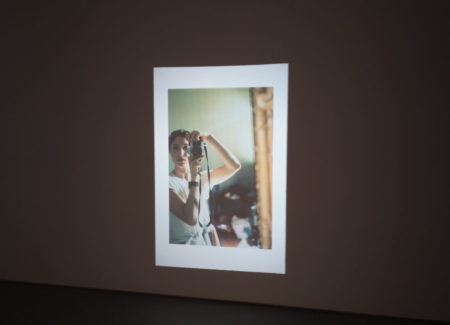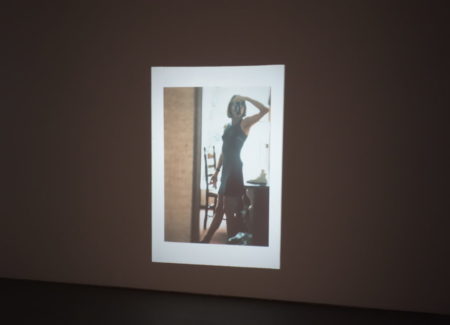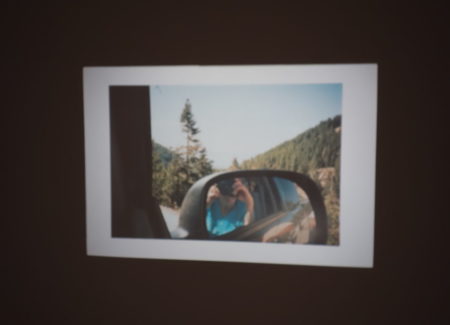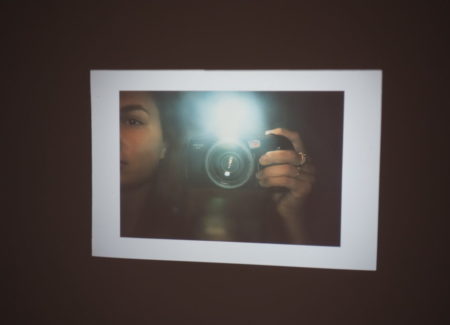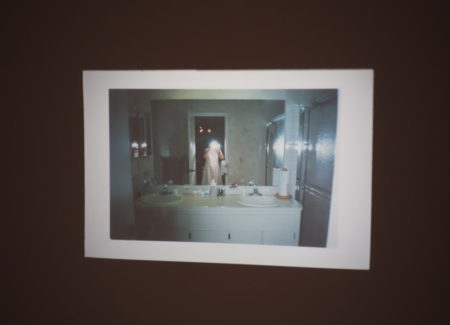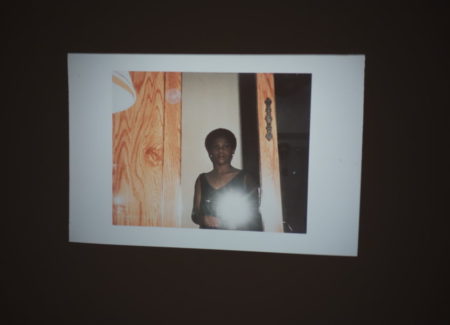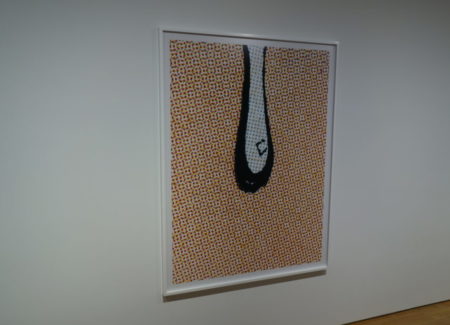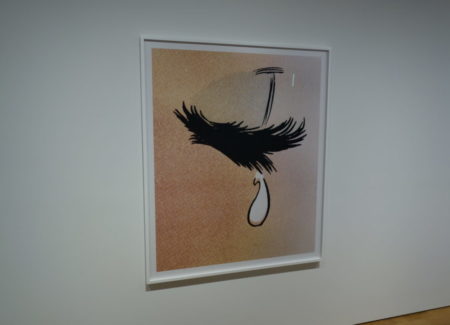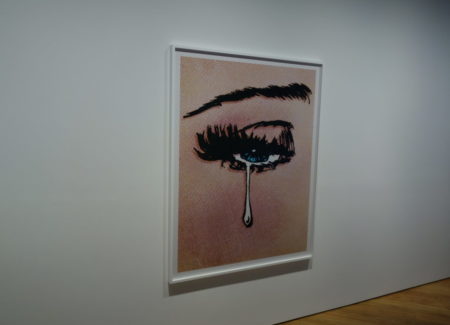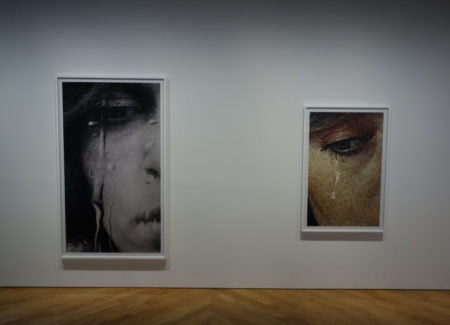JTF (just the facts): A total of 15 color photographs, framed in white and unmatted, and displayed against white walls on three floors of the gallery. All of the works are c-prints, made in 2017 or 2018. Physical sizes range from roughly 54×36 to 78×45 inches (or reverse), and all of the images are available in editions of 5+2AP. The show also includes 1 slideshow of 35mm slides, made in 2017. Its dimensions are variable, and it is available in an edition of 3+1AP. A monograph of the slideshow material was published in 2017 by Karma (here). (Installation shots below.)
Comments/Context: There is a certain feeling that occurs when we watch an artist settle into a confident, mature style. It’s as if all of the preceding work coalesces, with the deliberate step by step process of painstaking learning and foundation building finally culminating in its own forward momentum. And it is this aggregation of hard earned knowledge and force that allows (and encourages) an artist to push further, toward works that take more risks and have even more heft and resonance.
For the better part of past 15 years, Anne Collier has been investigating how women’s roles have been embedded into the image-based ephemera of popular culture. In unearthing, isolating, and rephotographing countless advertisements, album covers, posters, and other printed materials that capture women at home, at work, and even wielding cameras, she has systematically and insightfully deconstructed how women have been portrayed in various media, and what those portrayals say about how women have been viewed and valued in society. The most powerful of her works have an eerie and biting strangeness, the objects she has chosen to show us almost incomprehensible in their overt use of female stereotypes and cliches, to the point that chuckle-inducing parody turns to a deeper sense of persistent unease.
In her last New York gallery show (in 2016, reviewed here), Collier introduced and unpacked the loaded theme of women crying, with tightly cropped reappropriations of enlarged female eyes, each one with a tear dripping down the cheek. With the context of these images cut away, we were left with just the isolated gestures, and with the stubborn feeling that these usually heartfelt emotions were being staged for the camera. And it was this manufactured sadness that Collier wanted to explore, especially as it related to how women were conditioned to behave, or were routinely labeled as emotionally fragile or unstable.
In this newest exhibit, she continues her exploration of this motif, both following the path she began before and allowing the crying idea to evolve in alternate directions. Two new works extend the straightforward album cover as source thread, with black and white tears echoed by a rainy window and a version in color where the enlargement has turned the image grain into mottled texture.
Most of the photographs in the show rediscover the original woman crying theme in comic book source material, where stylized subservient melodrama is the storytelling mode of choice. Seeing these works, it is impossible not to immediately think of Roy Lichtenstein and his Pop reworking of comic book frames, but the comparison doesn’t hurt Collier, as she’s taken pining for Brad somewhere entirely different.
In each image, she’s isolated the eye or the single tear, getting so close with her camera that the Ben Day dots that make up the skin dissolve into Pointillist patterns of overlapping colors. When an eye is the subject, the lashes inevitably become the central feature, turning into black scratches and aggressive gestural markings; when a tear takes center stage, the isolation is even more disorienting and severe, the form becoming a droplet, an elongated vertical zip, a mountain snowcap, a squiggle of toothpaste, or even a semen stain. Seen in this way, the massively enlarged comic book tears represent a kind of heightened tension, becoming simultaneously abstract and wholly exaggerated. As symbols for the complexity of female roles, they pack a punch.
Another pair of images twists the visual conversation towards the industry of female self-help, with a particularly incisive piece of ephemera that questions whether others derive their impression of you from a variety of cues including how you talk, how you dress, your body, your manners, your sexual ability, your money, and other characteristics. It’s the kind of work by Collier that is both broadly provocative and yet grimly representative of the biases and attitudes faced by women. A slide show of found self portraits taken by women extends this line of thinking – all of the pictures were discarded by their makers and found by Collier at flea markets and tag sales. Each is a self-portrait that was, by definition, deemed unsatisfactory by the woman who made it (she didn’t keep it after all), and in that parade of failure, Collier sees layers of issues relating to female self confidence and self esteem. Most of the snapshots use mirrors and windows as reflectors, and while most aren’t keepers, as the throwaway slides click by, the weight of the self judging and personal dissatisfaction gets undeniably heavier.
Most working artists only get the chance to have a gallery show in New York once every eighteen months or two years, and so each show is a preciously rare chance to make an impression or communicate a set of ideas. In many cases, that chance is sadly diluted or squandered by dull surveys of older work or mis-edited or mis-presented selections of what’s new. But in this case, Collier has crisply delivered a presentation of fresh artworks that both intuitively connects back to her prior bodies of work and smartly engages those same fundamental concepts in innovative new ways. Given the confidence and intelligence embedded in the work and the particular cultural moment in which we find ourselves, I expect Collier’s comic book eyes and tears will find an enthusiastic audience.
Collector’s POV: The photographs in this show range in price from $22000 to $35000, based on size, with the slide show priced at $80000. Collier’s work has only just begun to find its way into the secondary markets, with recent prices ranging between roughly $5000 and $50000.
